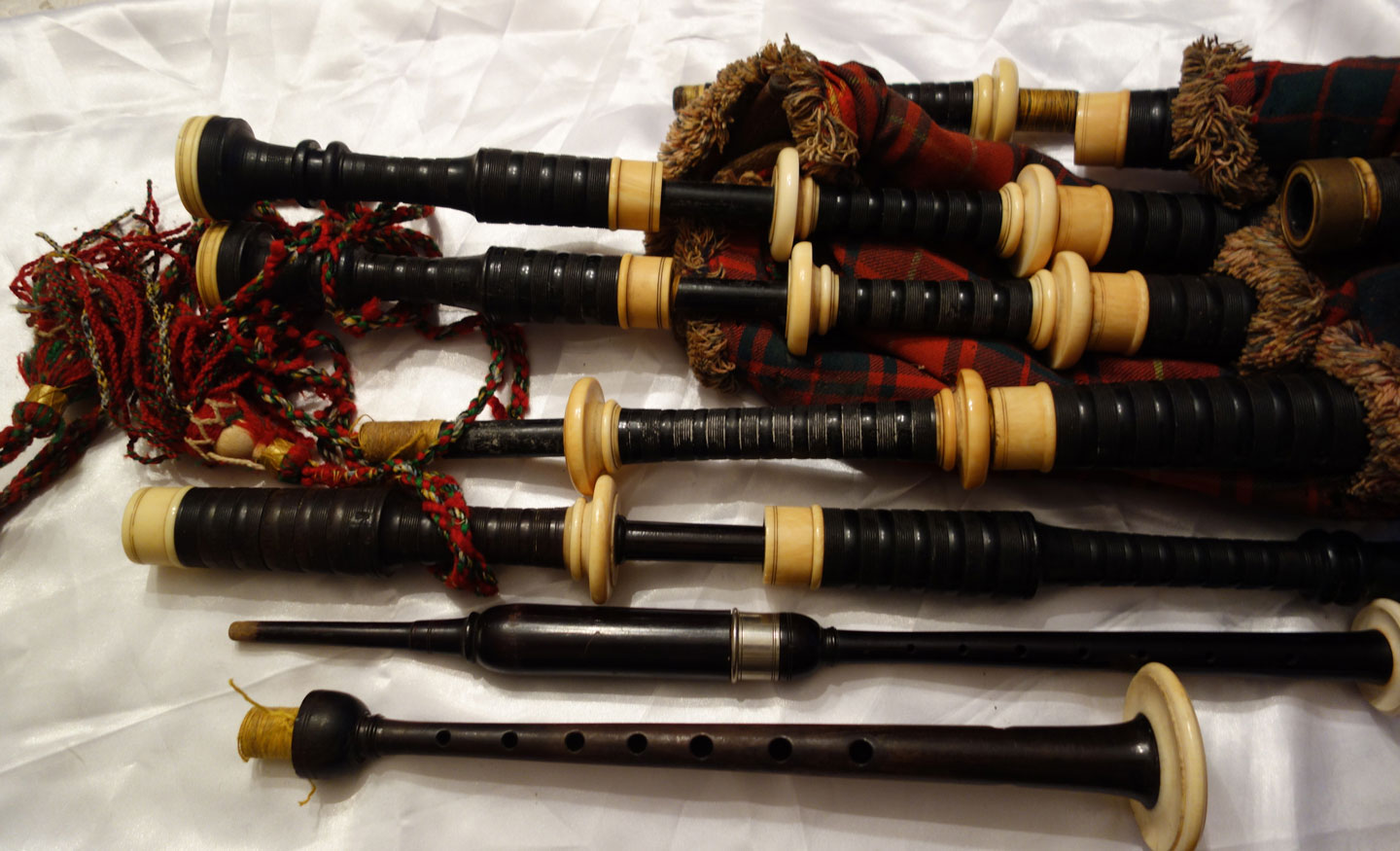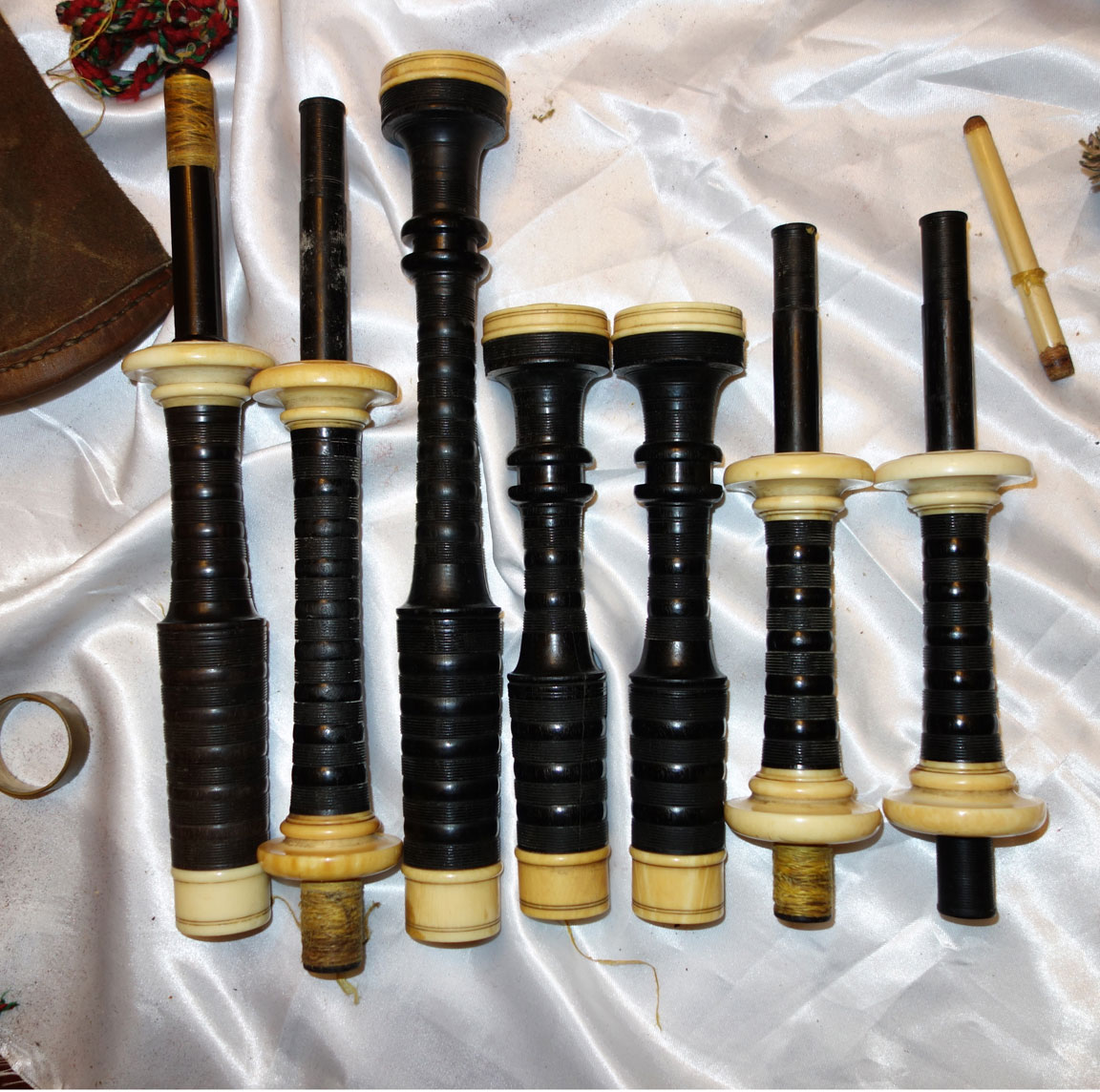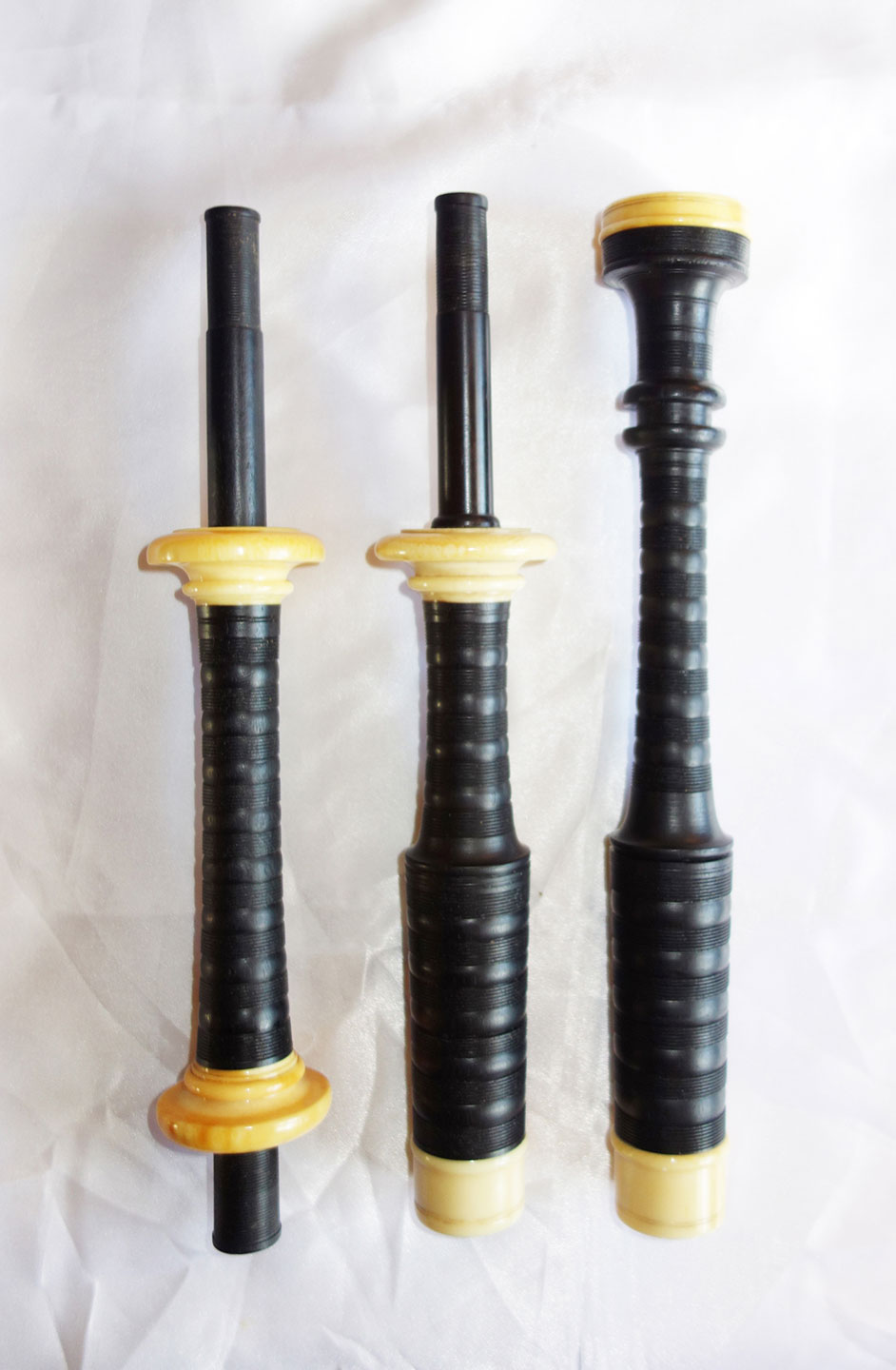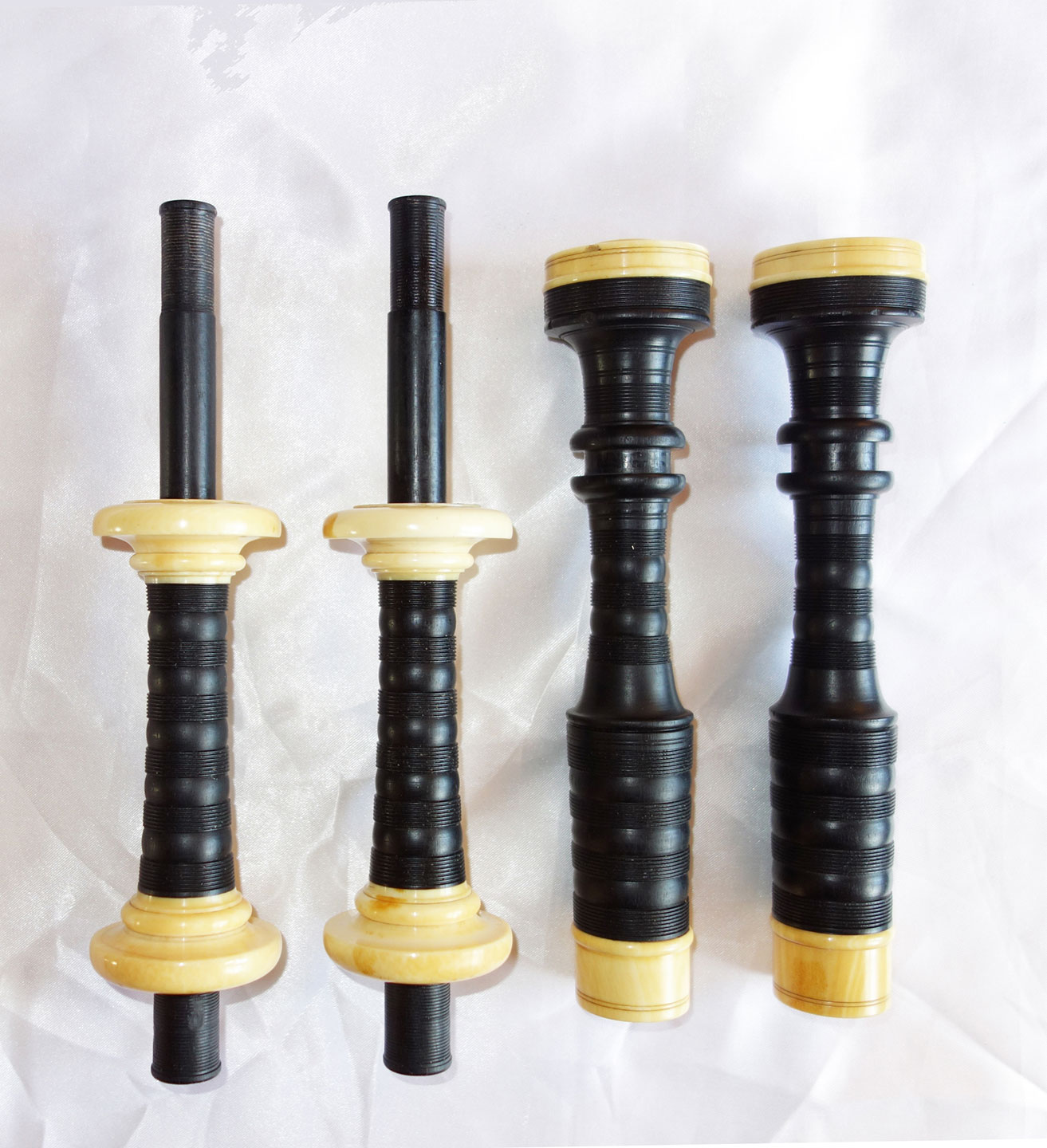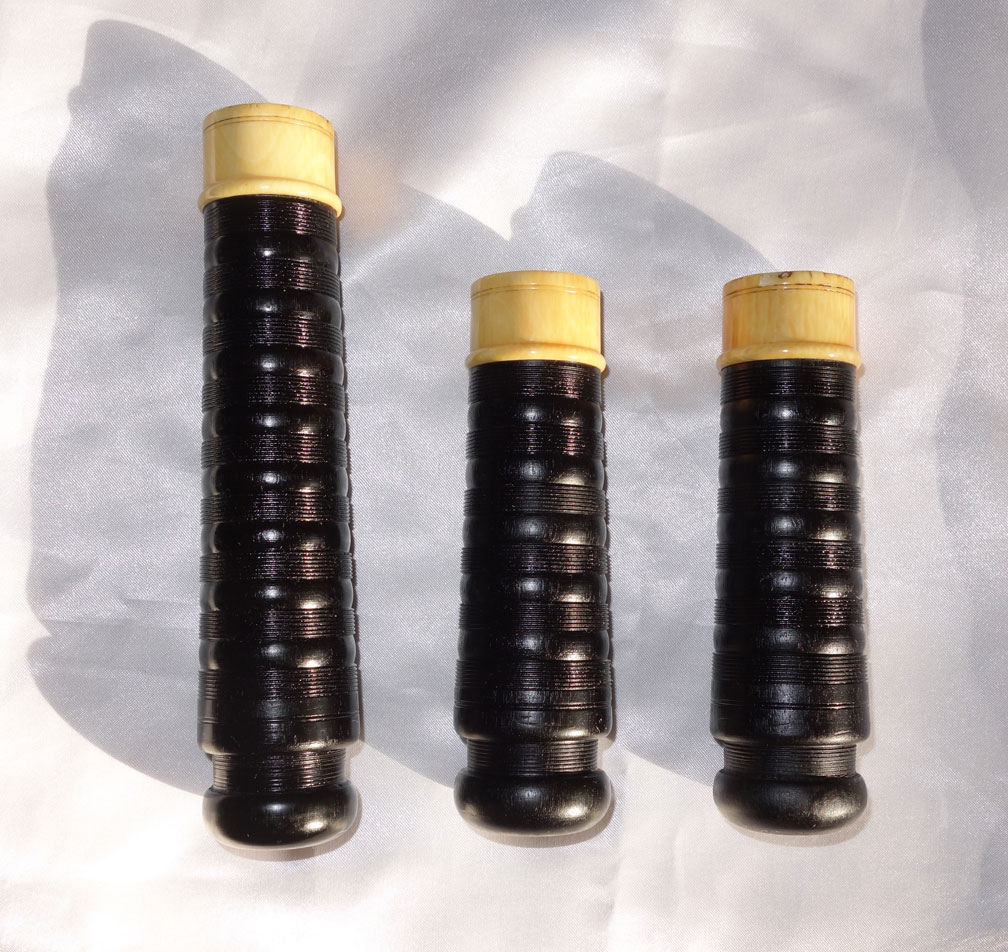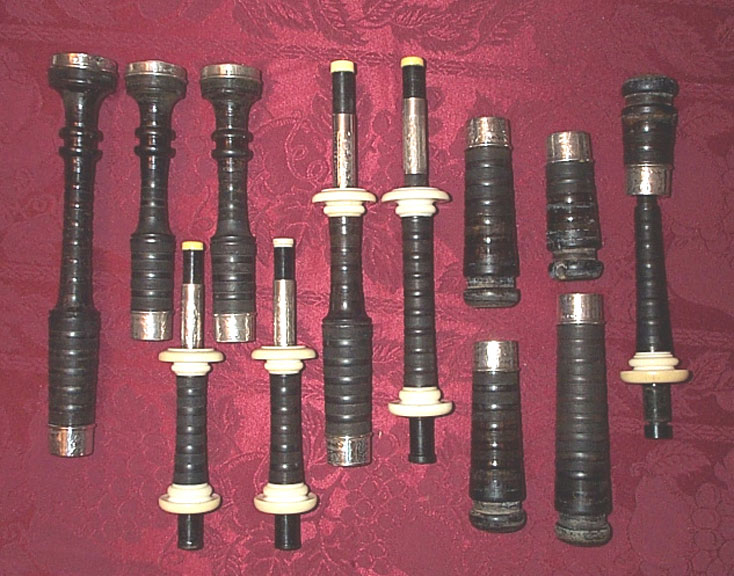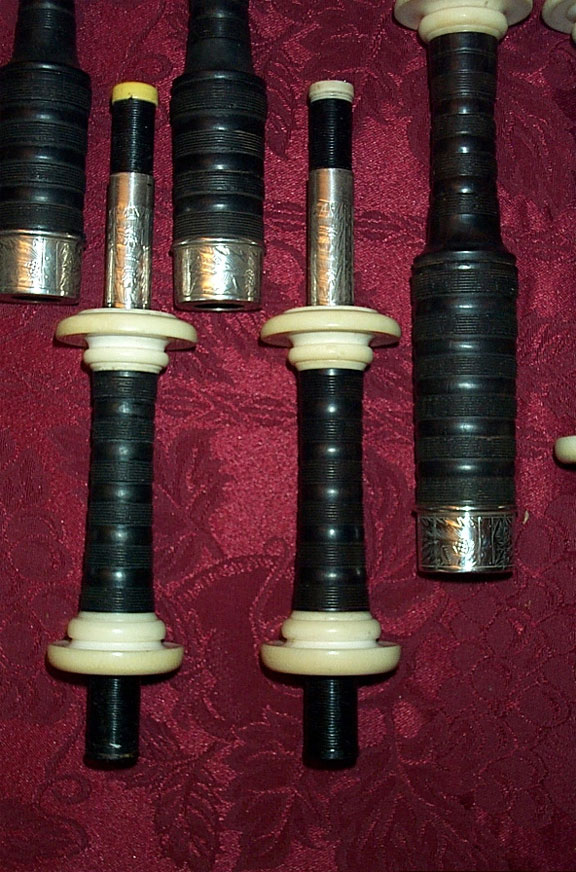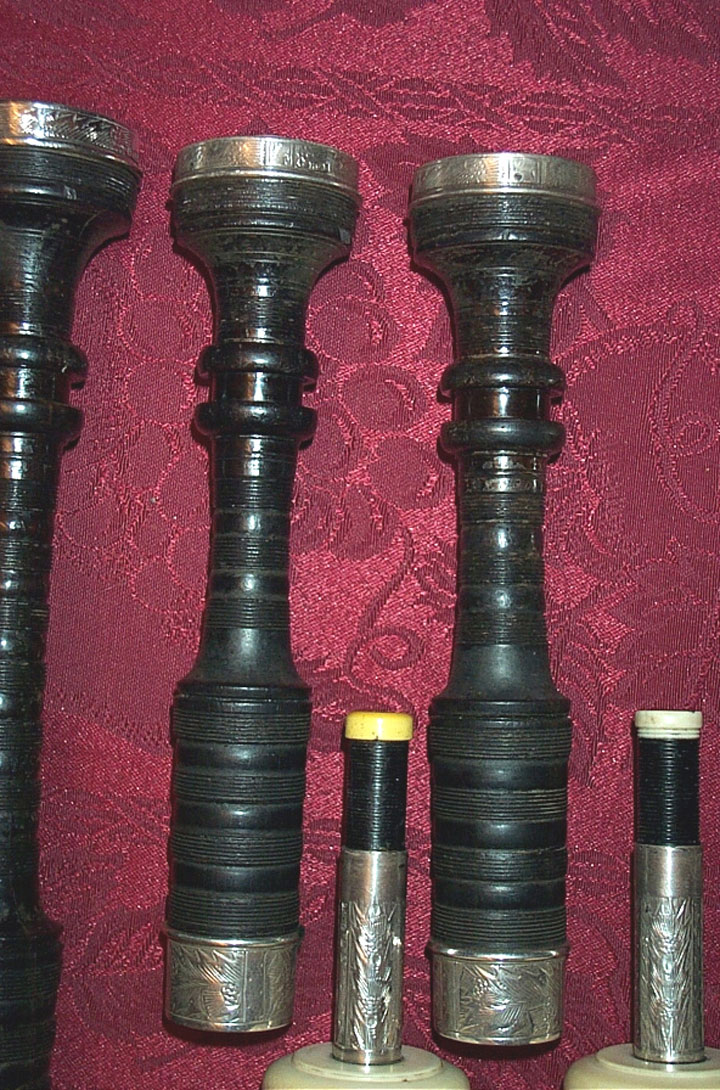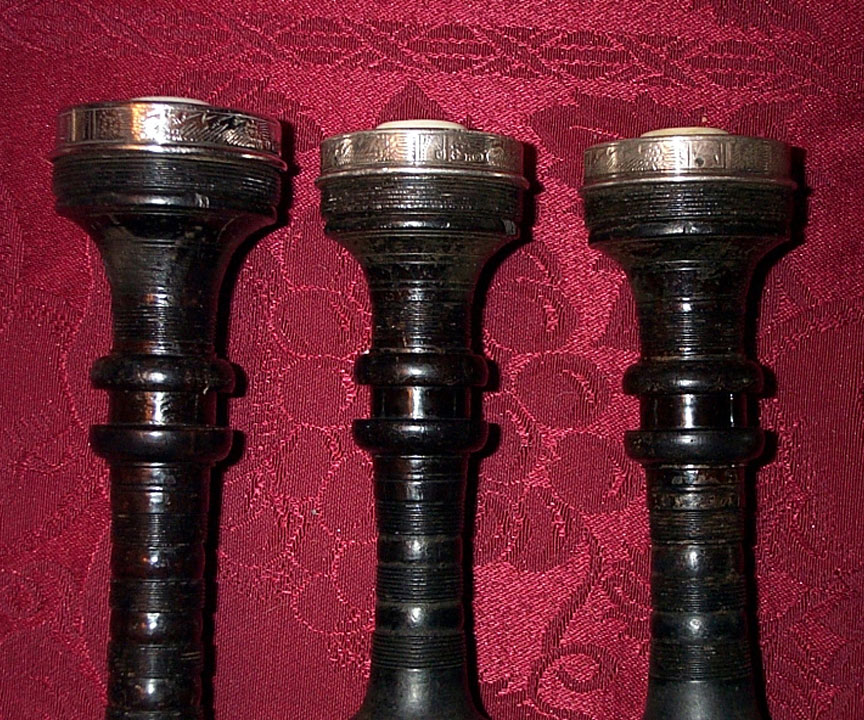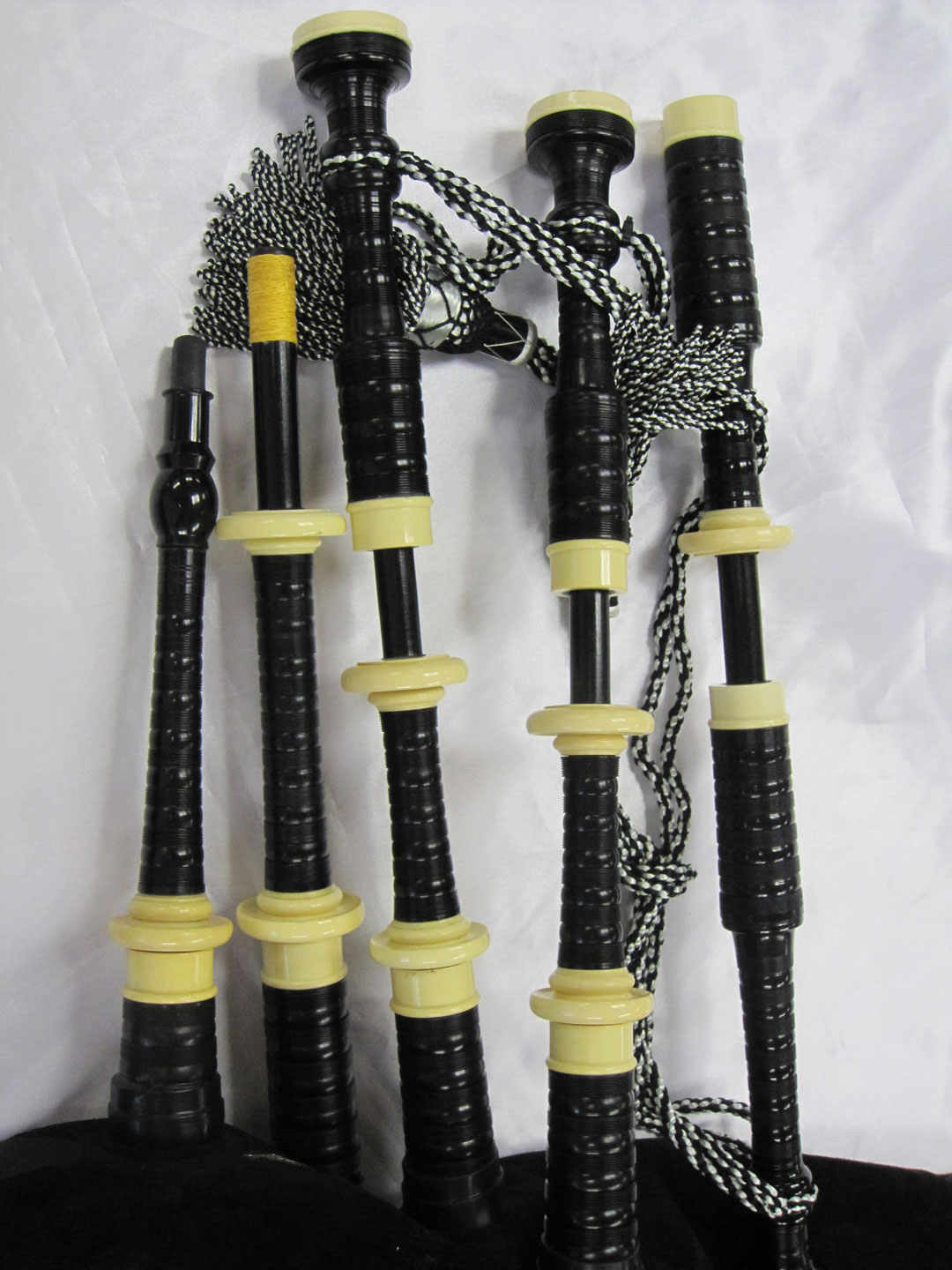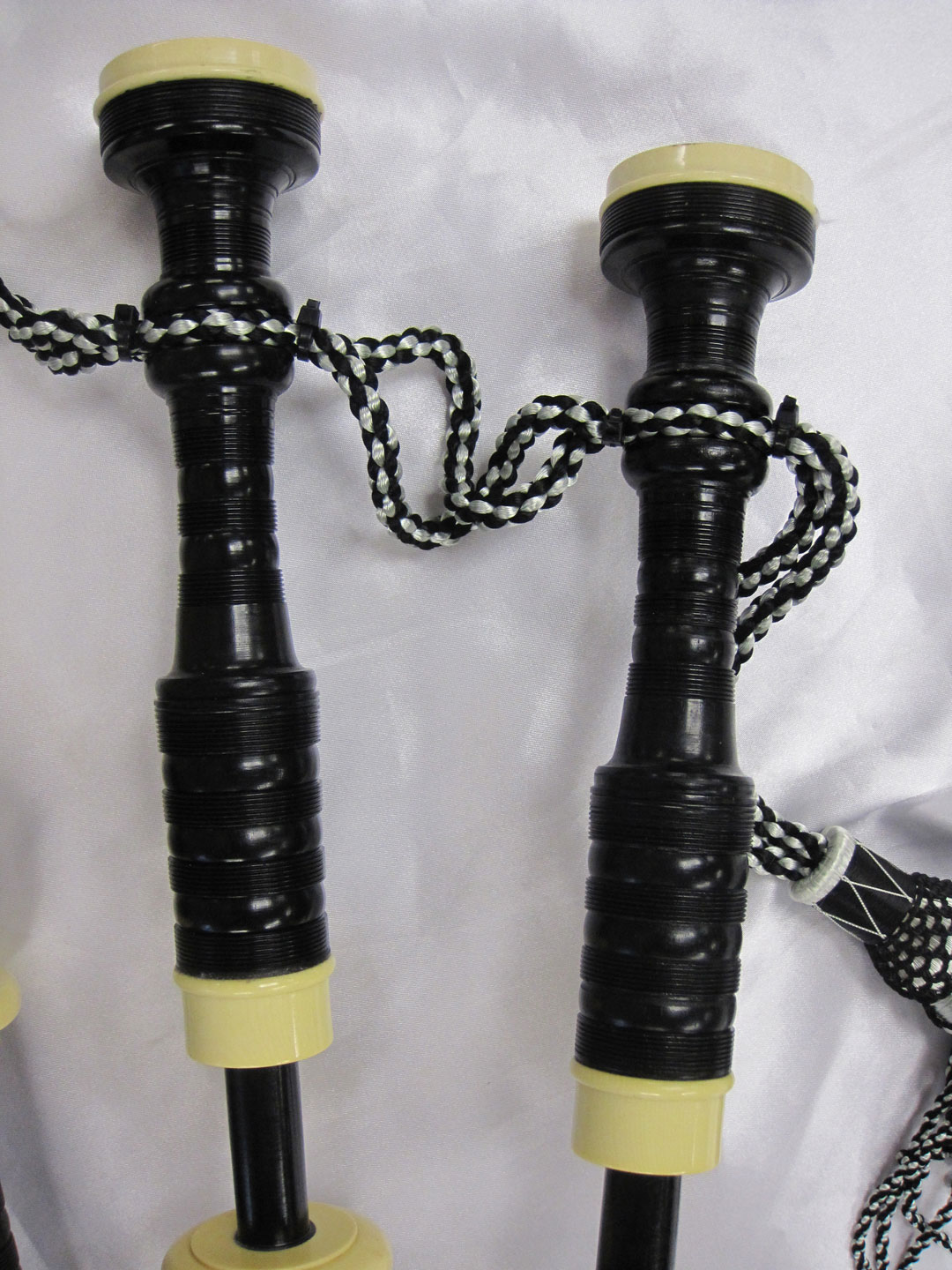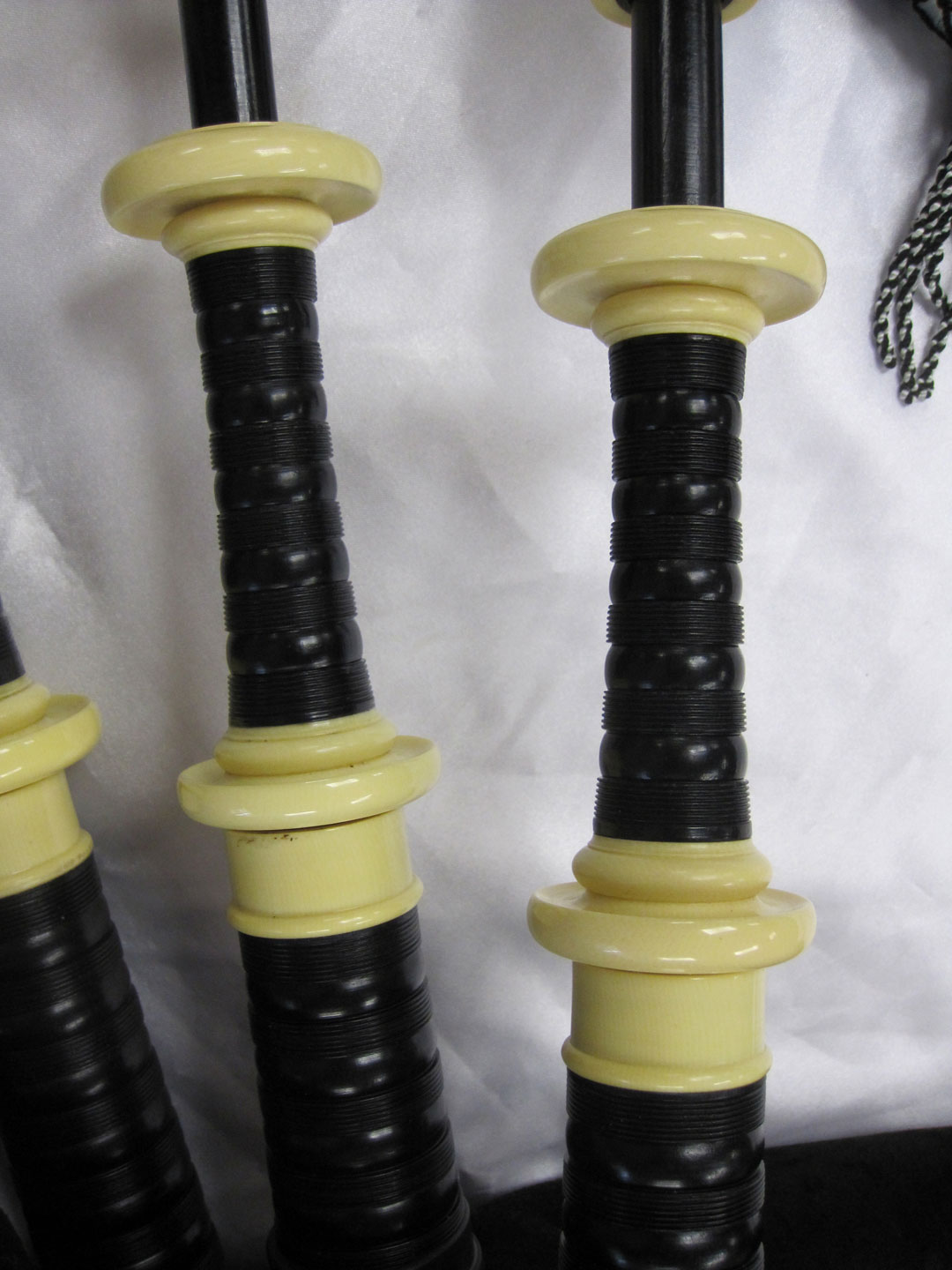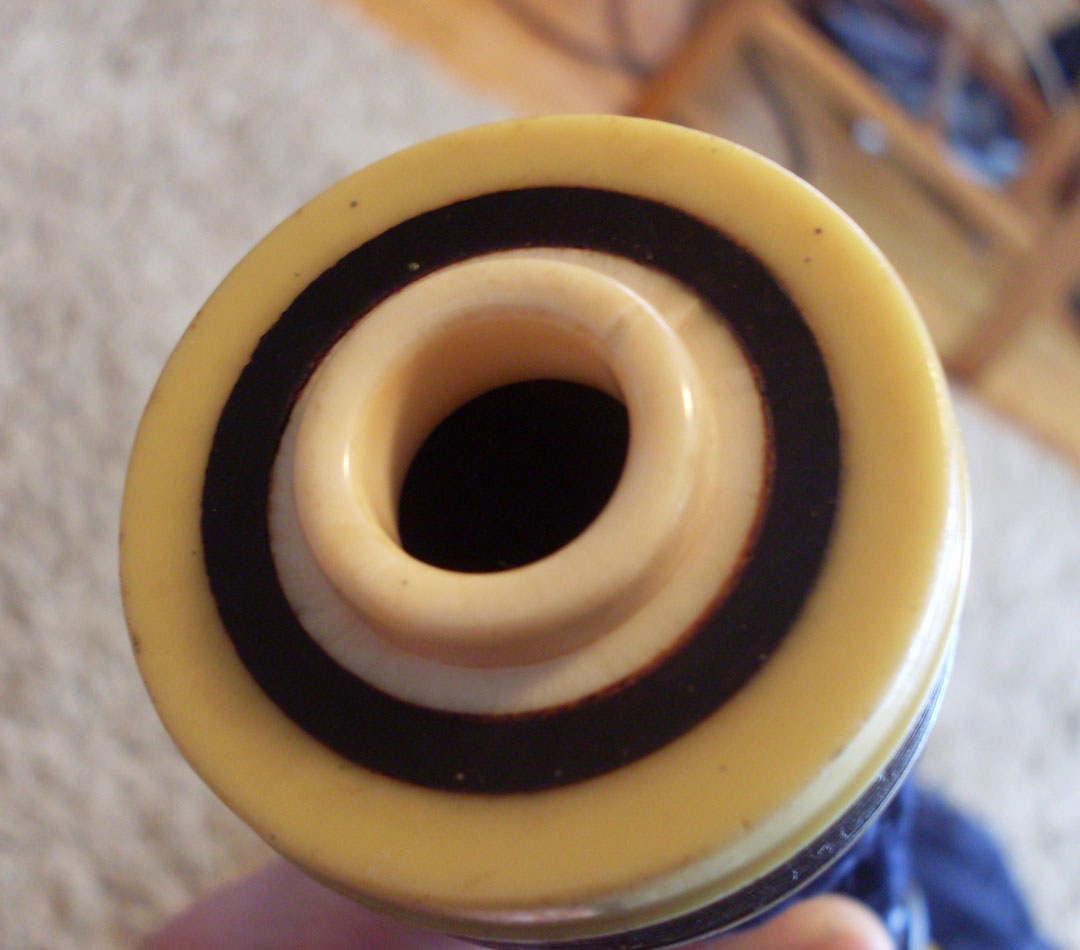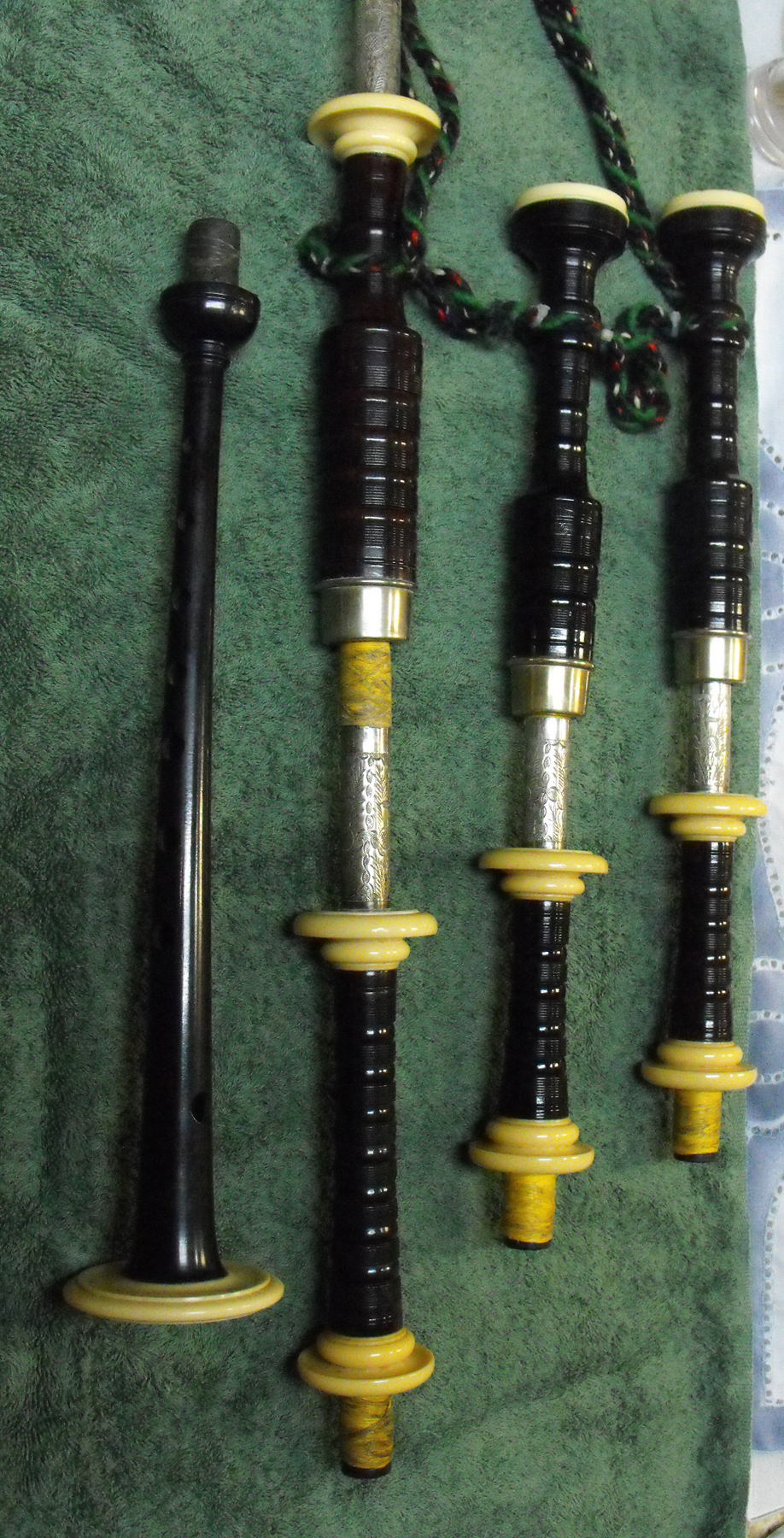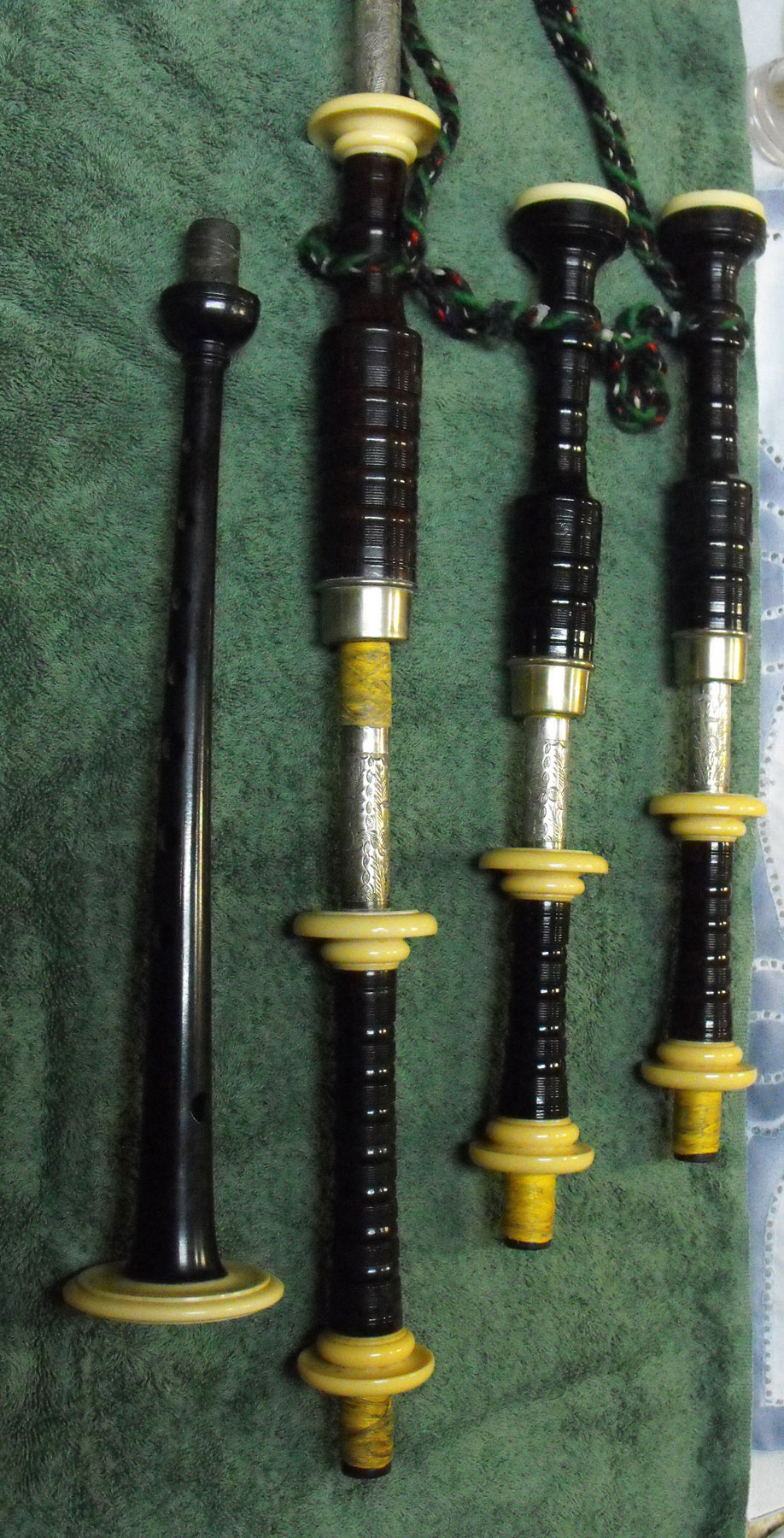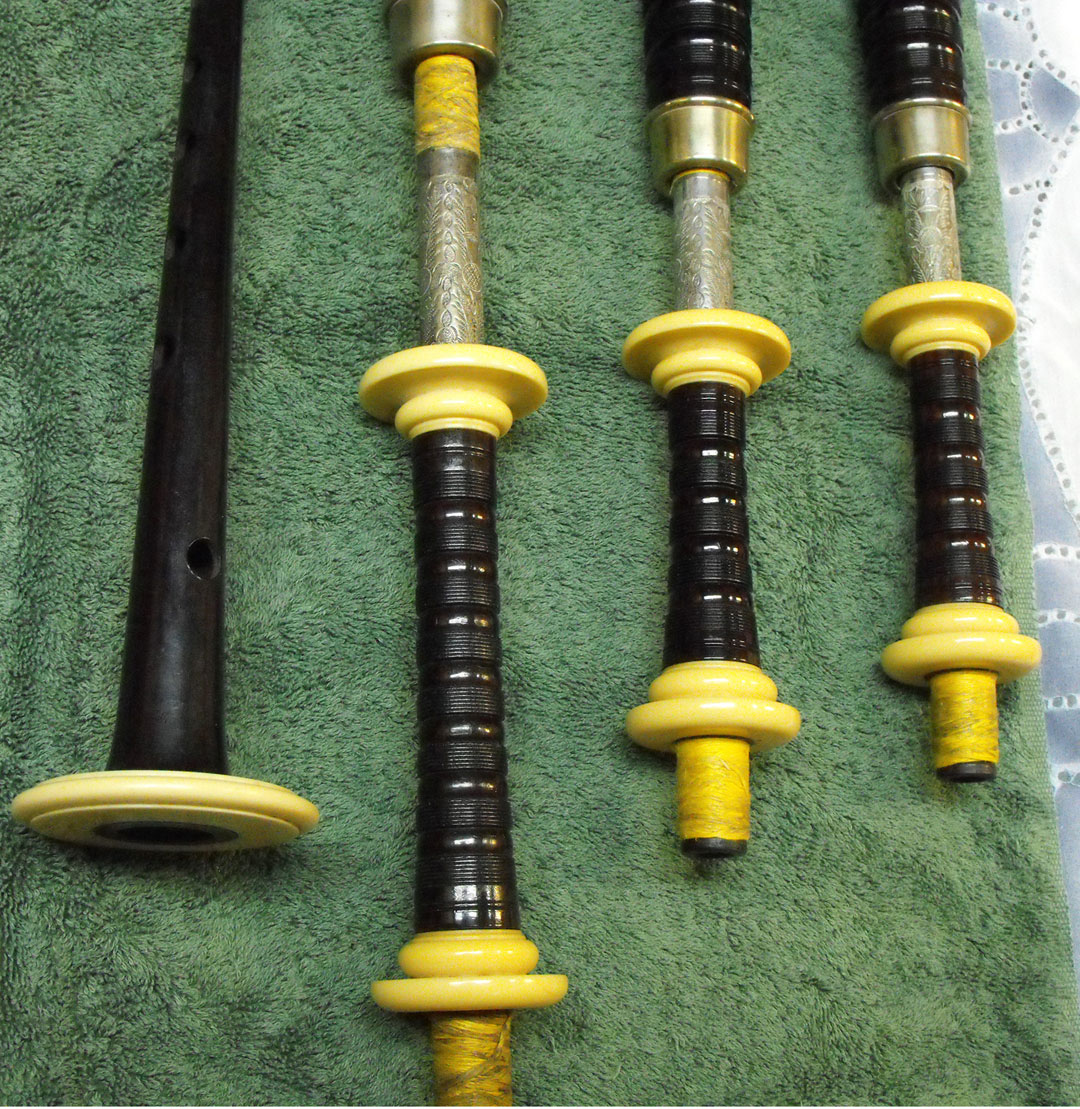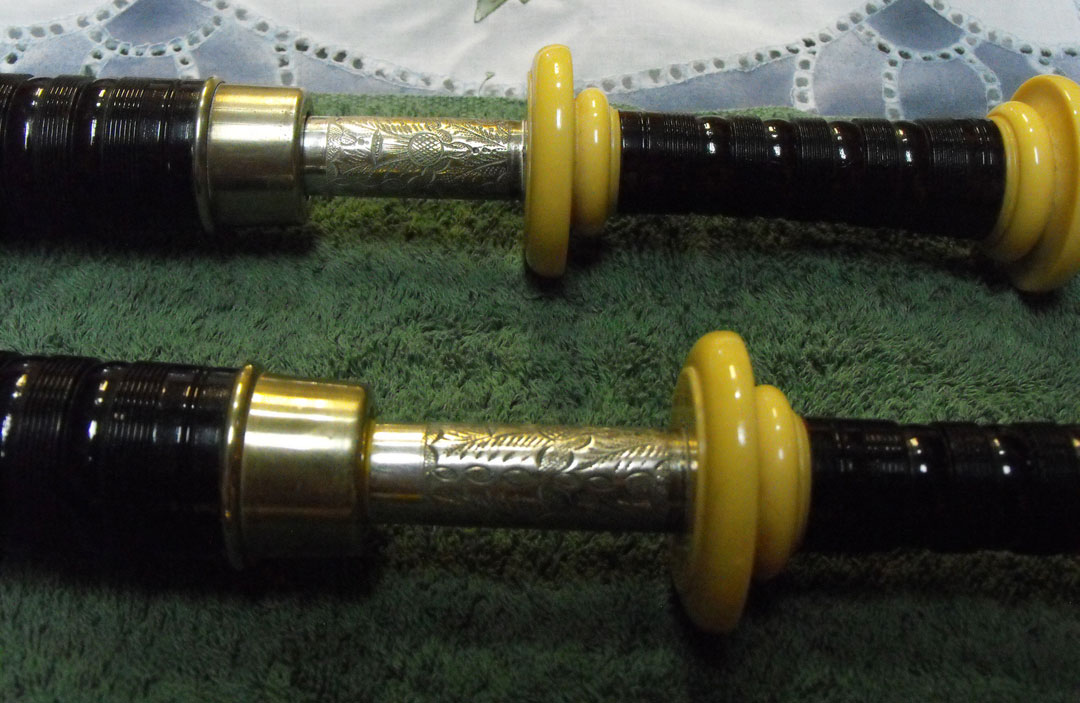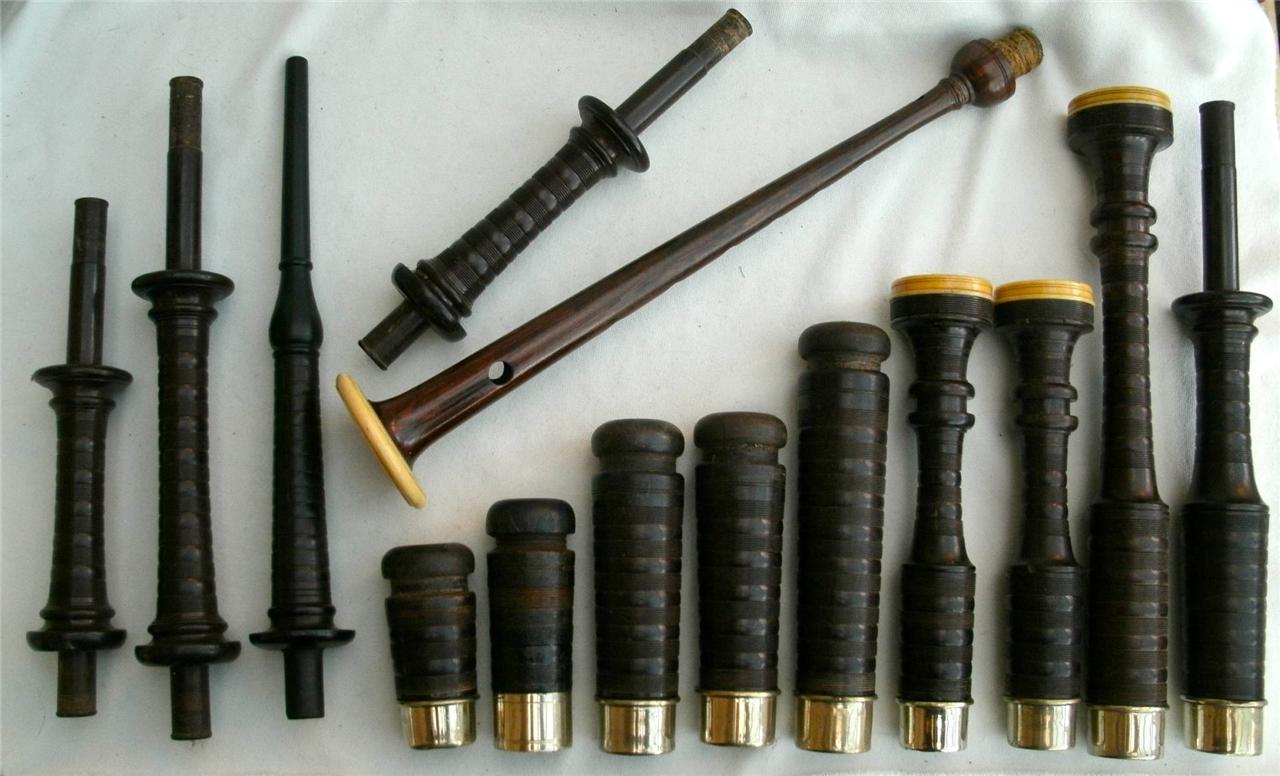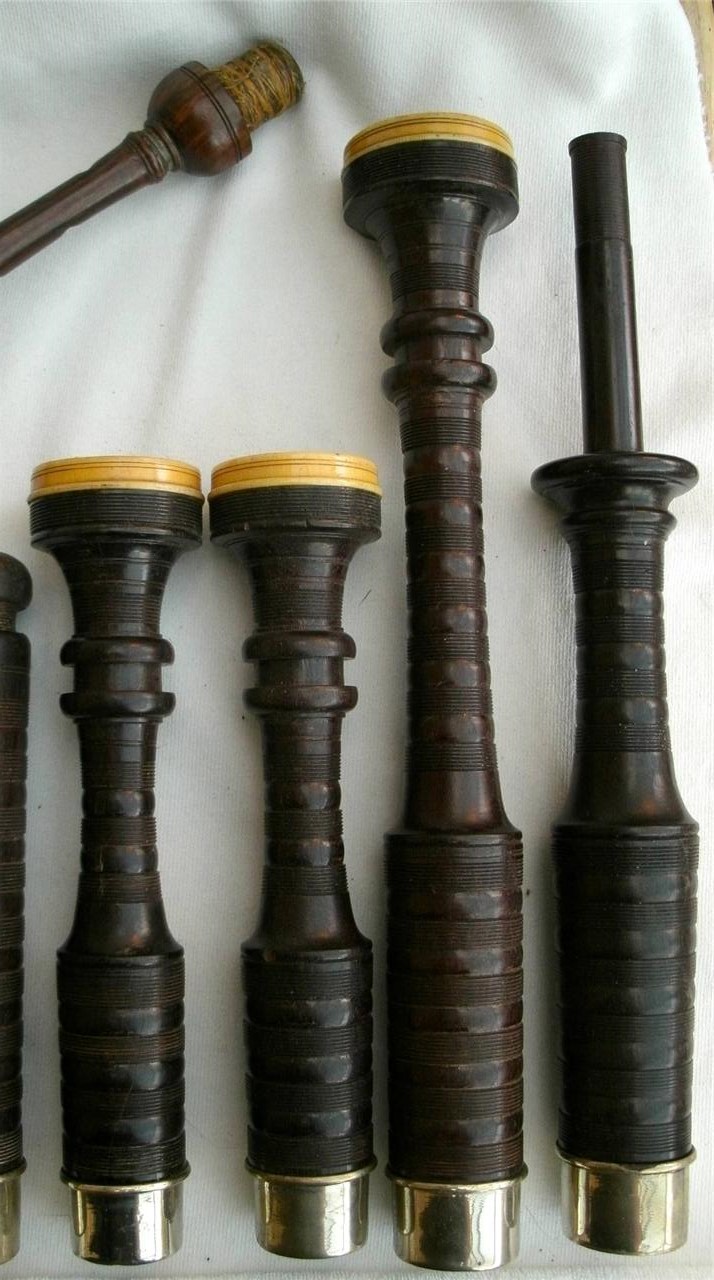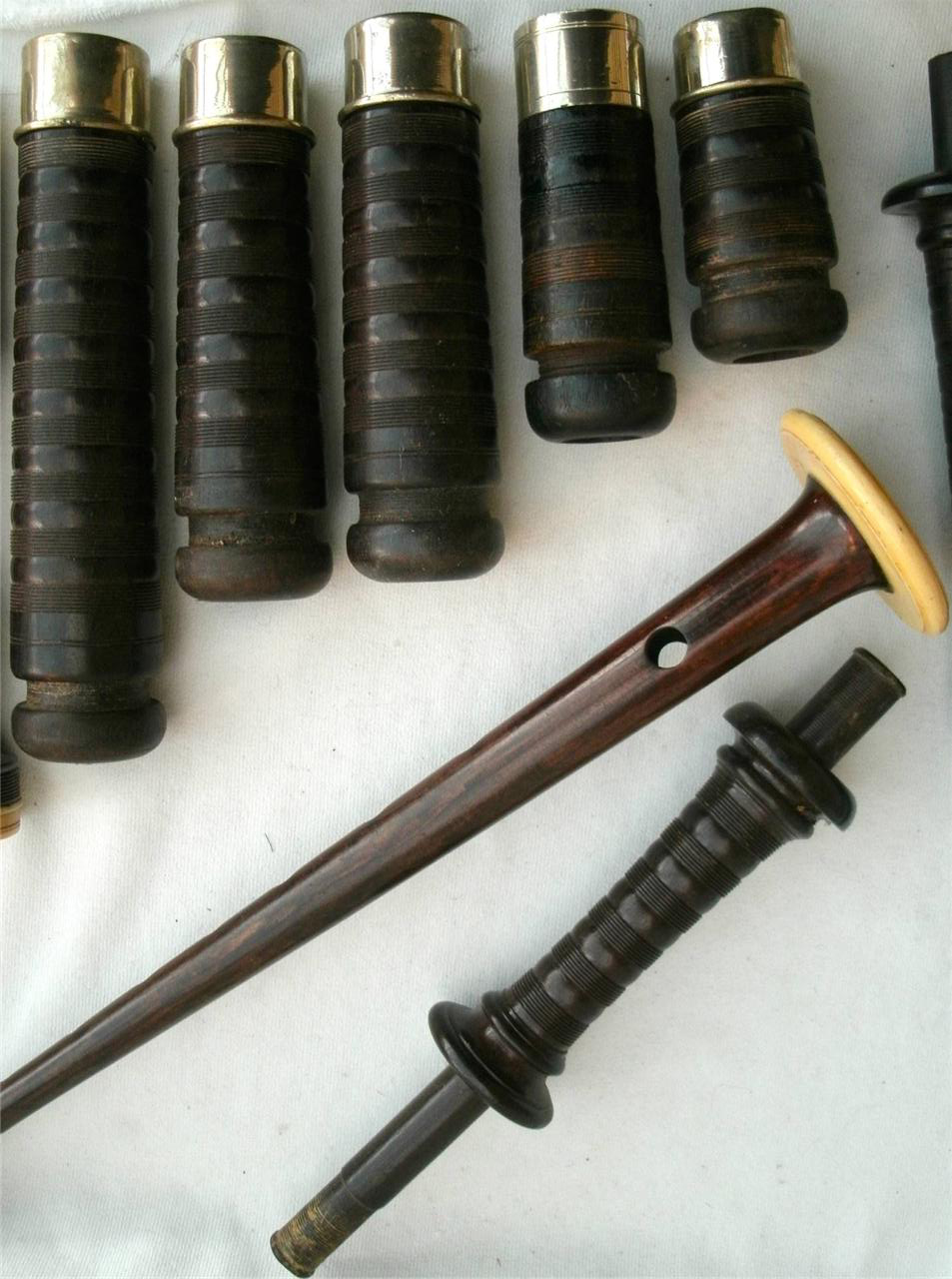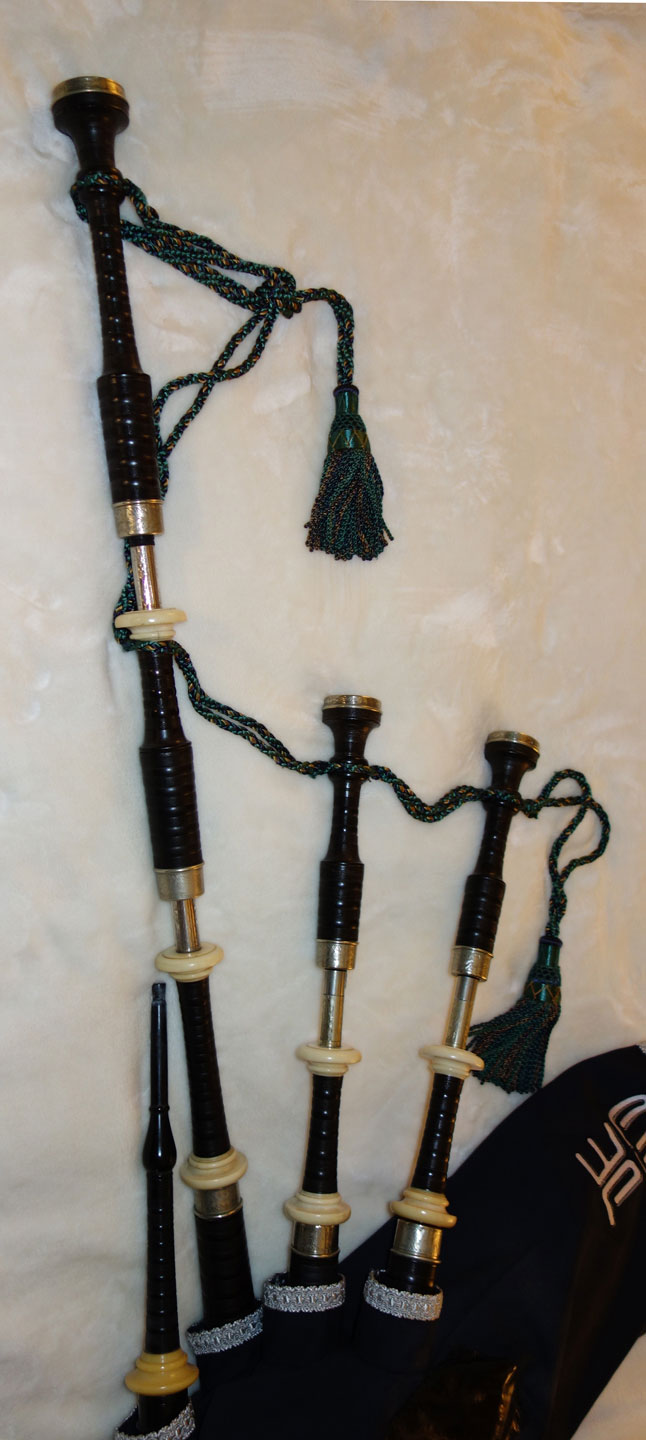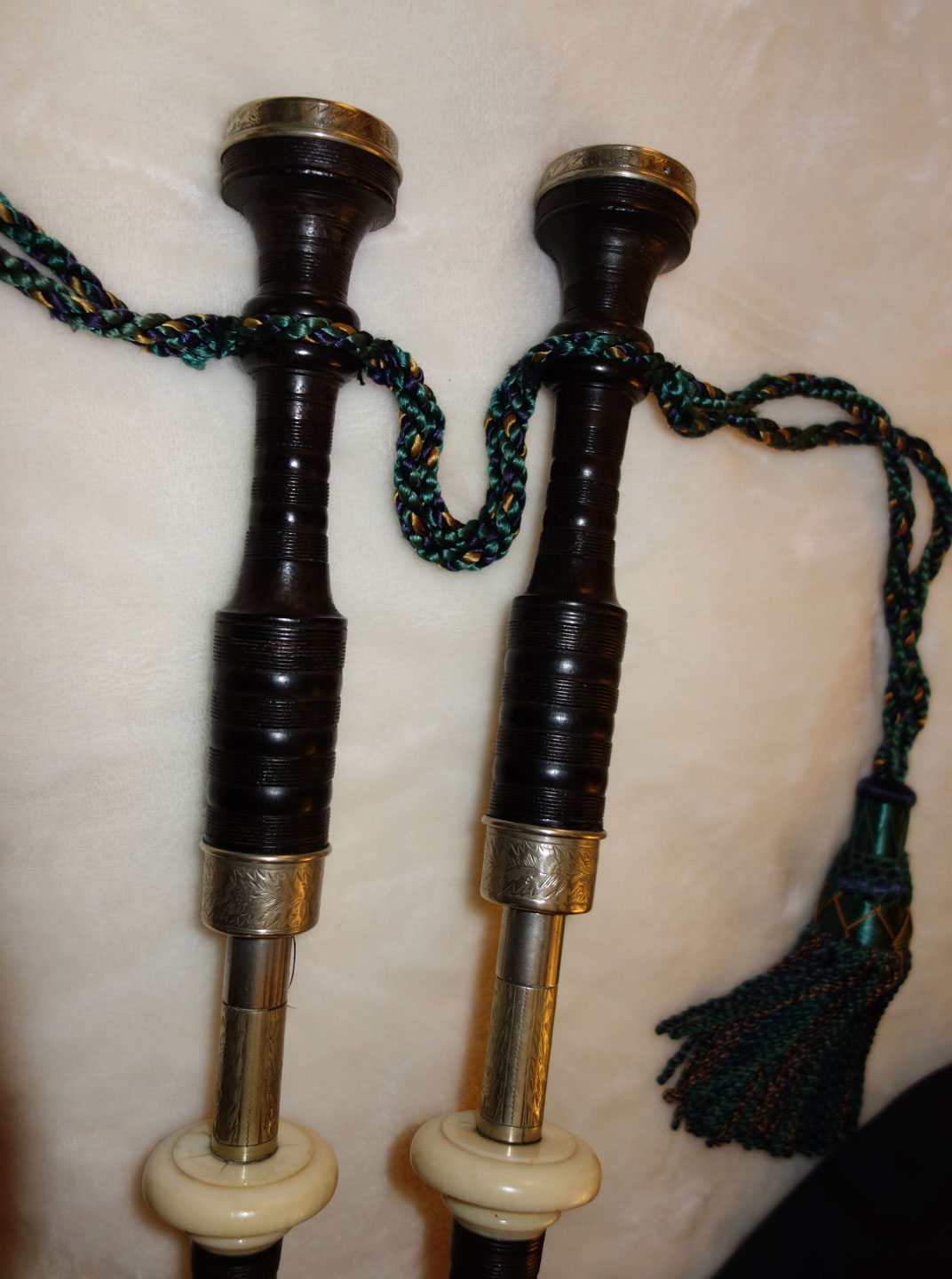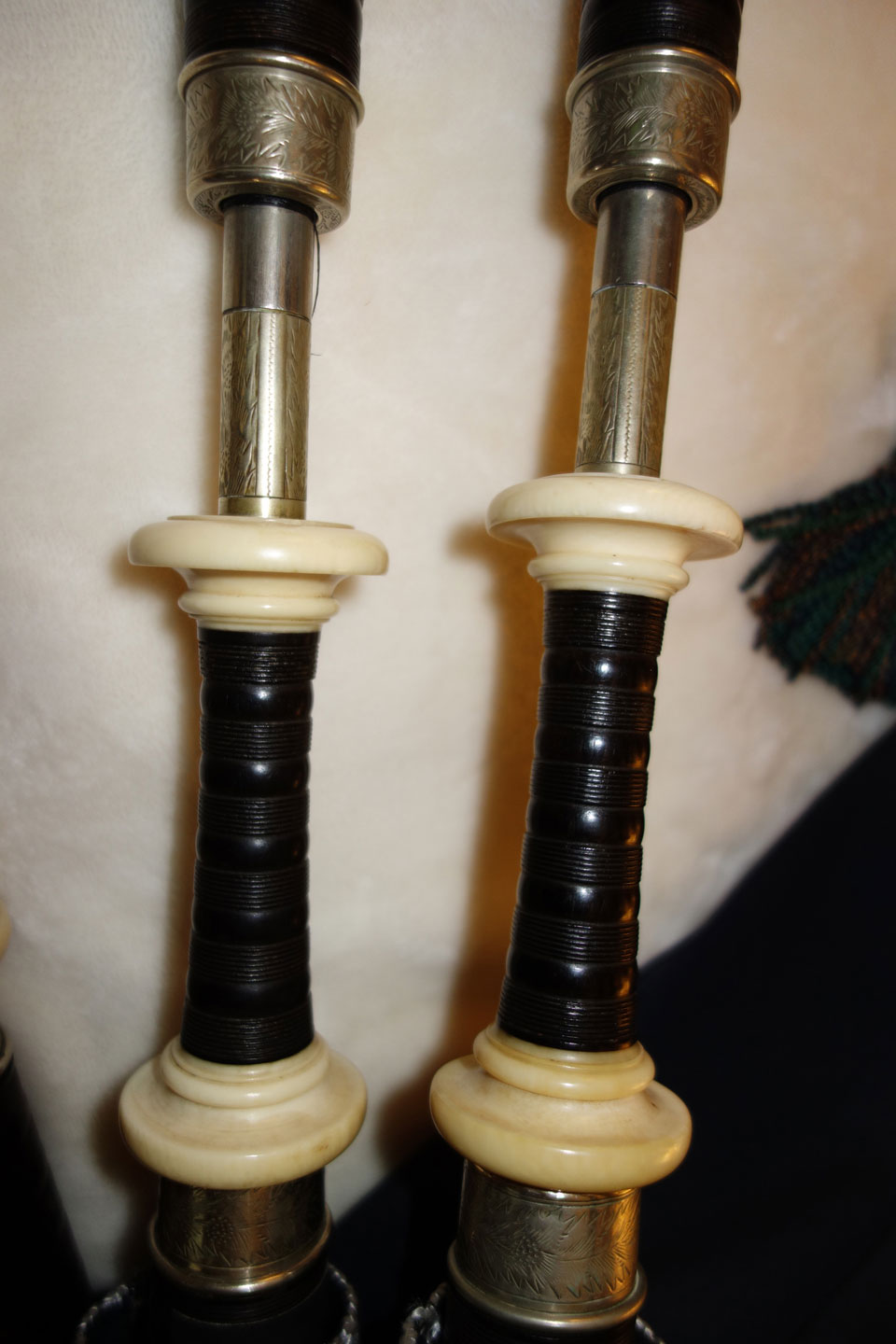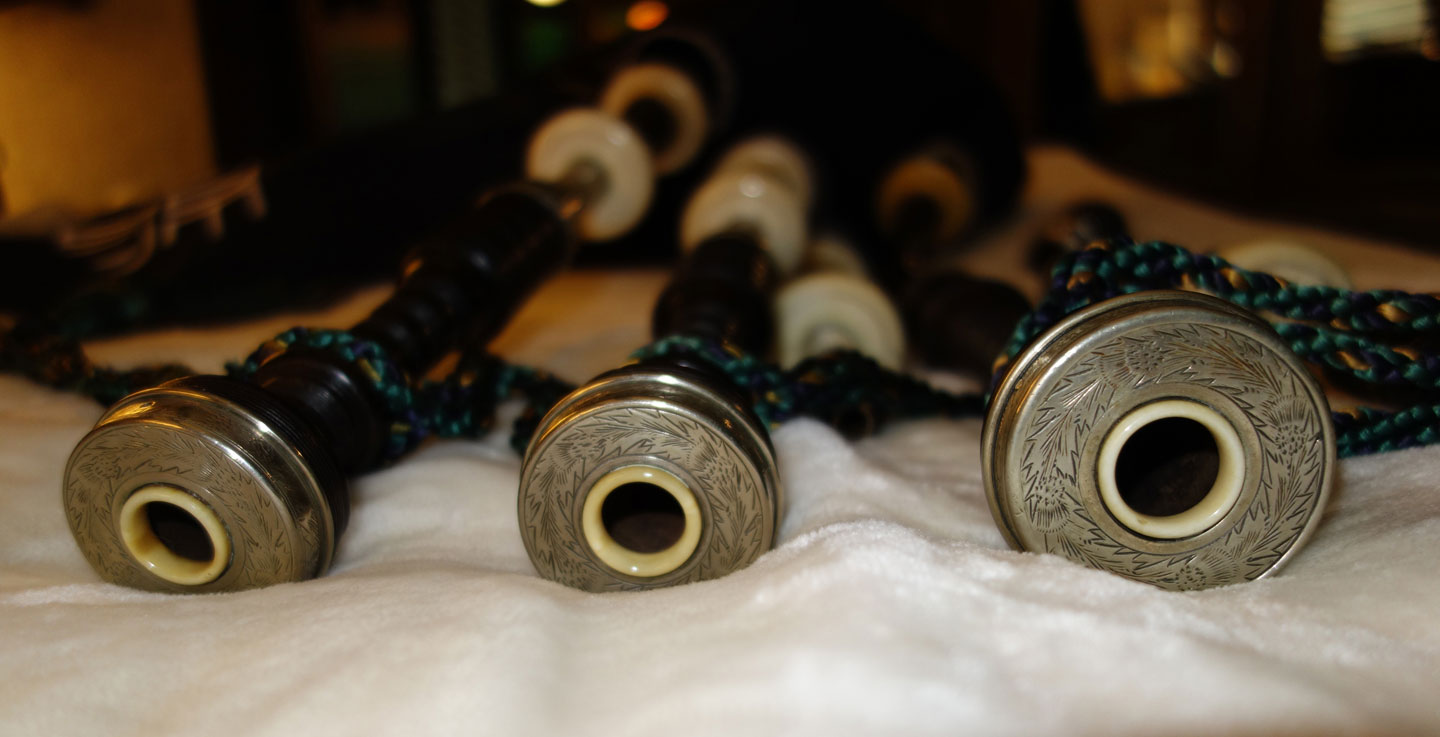This is the 30 year period where Lawrie produced some of the best bagpipes on the planet. John MacColl was the manager of the bagpipe department in 1908 until about 1935. Those closest to WWI are among those most revered. Many of these were made of ebony and cocuswood. This became less so by the early 1930's.
R. G. Lawrie 1910 to 1940
The bagpipe below came to me in 2014, shortly after I returned to Canada. They were in very difficult condition. I was pleased to preserve them as a family artifact. With additional work, I'm confident that they could return to sing once again. Here is their story.
David Bowman Forrester 1893-1974 - David was born in September 1893 in Kilmarnock, Scotland. At age 16, in July, 1910 David immigrated to Canada where he worked as a farm labourer in Drinkwater, Saskatchewan. Private David B. Forrester joined the 46th Battalion of the Canadian Expeditionary Force in 1916 and fought in France until the end of World War One. David may have brought his bagpipes with him to Canada in 1910. Over a period of 4 years from 1910 to 1914, the rest of Davidís immediate family members immigrated to Canada. These bagpipes could have been brought to Canada by his father, also David Bowman Forrester, in 1913 when he came. Another possibility is that he could have returned to Canada with them after WW1 in 1918.
David Bowman Forrester 1893-1974 - David was born in September 1893 in Kilmarnock, Scotland. At age 16, in July, 1910 David immigrated to Canada where he worked as a farm labourer in Drinkwater, Saskatchewan. Private David B. Forrester joined the 46th Battalion of the Canadian Expeditionary Force in 1916 and fought in France until the end of World War One. David may have brought his bagpipes with him to Canada in 1910. Over a period of 4 years from 1910 to 1914, the rest of Davidís immediate family members immigrated to Canada. These bagpipes could have been brought to Canada by his father, also David Bowman Forrester, in 1913 when he came. Another possibility is that he could have returned to Canada with them after WW1 in 1918.
"Before" pictures below - "After" pictures to the right. Also shows the early classic profile of Lawrie stocks.
This bagpipe is a marked departure from those earlier Lawrie bagpipes. Many of the classic "Lawrie" features can be seen place Lawrie bagpipes from this era apart from others. The Lawrie bagpipe below has silver hallmarked 1927.
The set to the left is probably from the 1920's with celluloid (ivoroid) mounts. This material was highly flammable but retained it's original color, unlike catalin which turned orange with oxidation.
Those Lawrie bagpipe made with celluloid or catalin often had elephant ivory bushings. I suspect that bushing were probably made in bulk and used as pipes were being finished without concern for matching materials.
Here's why you can't trust hallmarks (left). The date on the silver is 1950 however you can see that this is probably from the 1930's, with celluloid projecting mounts and nickel ferrules. Someone thought to install engraved silver tuning slides.
Very early wood mount set with celluloid rings and ivory bushings. The chanter is cocuswood.
Sid Girlings outstanding WWI Lawrie with engraved German Silver.
